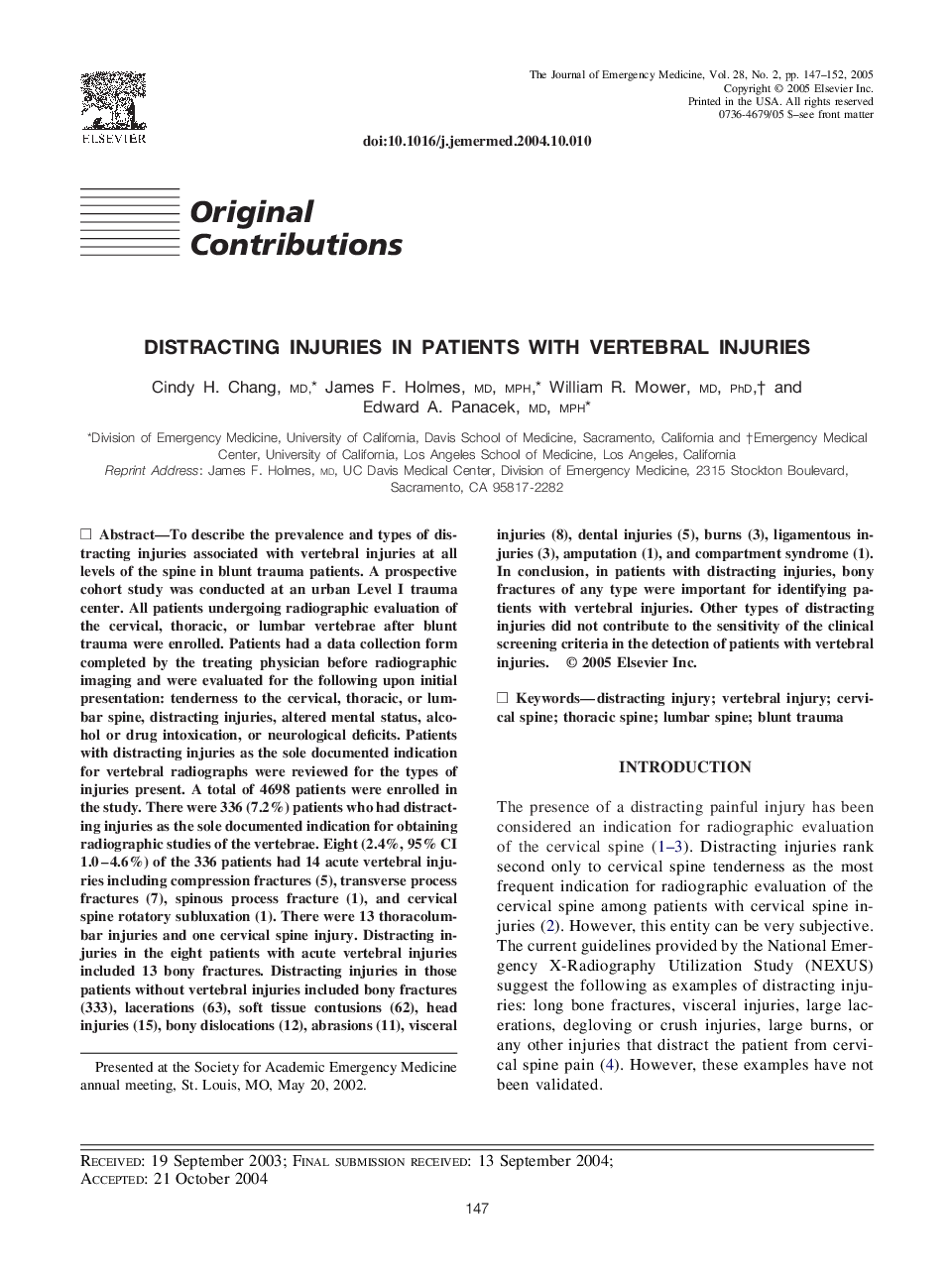| Article ID | Journal | Published Year | Pages | File Type |
|---|---|---|---|---|
| 10021817 | The Journal of Emergency Medicine | 2005 | 6 Pages |
Abstract
To describe the prevalence and types of distracting injuries associated with vertebral injuries at all levels of the spine in blunt trauma patients. A prospective cohort study was conducted at an urban Level I trauma center. All patients undergoing radiographic evaluation of the cervical, thoracic, or lumbar vertebrae after blunt trauma were enrolled. Patients had a data collection form completed by the treating physician before radiographic imaging and were evaluated for the following upon initial presentation: tenderness to the cervical, thoracic, or lumbar spine, distracting injuries, altered mental status, alcohol or drug intoxication, or neurological deficits. Patients with distracting injuries as the sole documented indication for vertebral radiographs were reviewed for the types of injuries present. A total of 4698 patients were enrolled in the study. There were 336 (7.2%) patients who had distracting injuries as the sole documented indication for obtaining radiographic studies of the vertebrae. Eight (2.4%, 95% CI 1.0-4.6%) of the 336 patients had 14 acute vertebral injuries including compression fractures (5), transverse process fractures (7), spinous process fracture (1), and cervical spine rotatory subluxation (1). There were 13 thoracolumbar injuries and one cervical spine injury. Distracting injuries in the eight patients with acute vertebral injuries included 13 bony fractures. Distracting injuries in those patients without vertebral injuries included bony fractures (333), lacerations (63), soft tissue contusions (62), head injuries (15), bony dislocations (12), abrasions (11), visceral injuries (8), dental injuries (5), burns (3), ligamentous injuries (3), amputation (1), and compartment syndrome (1). In conclusion, in patients with distracting injuries, bony fractures of any type were important for identifying patients with vertebral injuries. Other types of distracting injuries did not contribute to the sensitivity of the clinical screening criteria in the detection of patients with vertebral injuries.
Related Topics
Health Sciences
Medicine and Dentistry
Emergency Medicine
Authors
Cindy H. MD, James F. MD, MPH, William R. MD, PhD, Edward A. MD, MPH,
